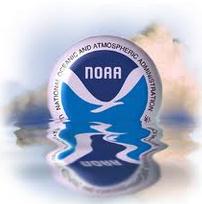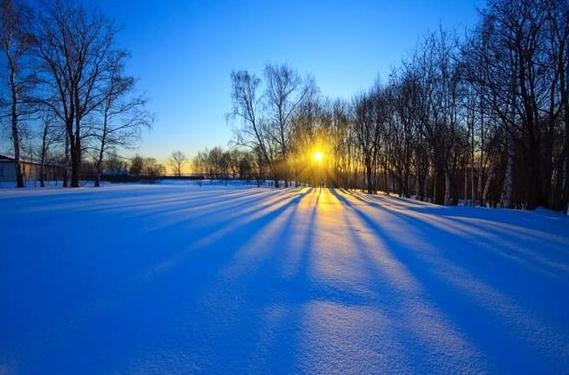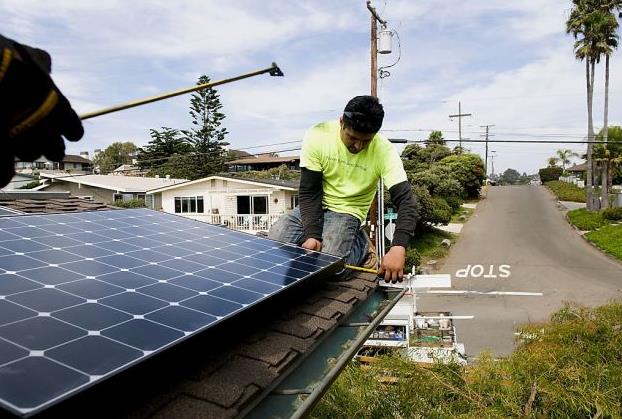31 F. Maximum temperature yesterday in the Twin Cities.
35 F. average high on March 3.
35 F. high on March 3, 2016.
March 4, 1935:
An extremely damaging ice storm hits Duluth. At the time it was called
'The worst ice storm in Duluth’s history'. The storm began with freezing
rain and wet snow falling at the Duluth Weather Bureau at 7th Ave West
and 8th Street at 10pm on March 3rd. The temperature was 26 degrees. By
the morning of the 4th, the snow stopped but the freezing rain
continued. The lights started going out in Duluth by 6pm on the 4th due
to power lines breaking. By the morning of the 5th, Duluth was virtually
isolated from the outside world except for shortwave radio. A local ham
radio operator sent the Duluth National Weather Service reports: Four
streetcars had to be abandoned in the storm, three of them in the
western part of the city. A heavy salt mixture and pickaxes were used to
try to free the stuck streetcars. A one-mile stretch of telephone poles
along Thompson’s Hill was broken off as if they were toothpicks due to
the ice.
The Extended Outlook Calls for Weather Whiplash
If one foot is in boiling water, the other in ice water, do you feel "average"? On Monday, when temperatures top 60 degrees, a flood of "humidity" washes your face, and you hear a distant rumble of thunder, resist the urge to blurt out "spring is here!" Because it's not.
Nature, nor the mercury, ever moves in a perfectly straight line. We lurch and stagger from one season to the next. Although the trend will obviously be toward warmer temperatures there will be notable corrections and relapses. No, winter won't go gently into that night.
We just glided through the 10th warmest meteorological winter on record; the 15th warmer-than-normal winter in the last 20 years.
You should regain feeling in your toes today. Expect low 60s Sunday, again Monday; when a fire hose of Gulf moisture sparks a few thunderstorms. A slushy clipper next Friday may pull arctic air southward in its wake. ECMWF guidance hints at 20s and 30s next weekend with a smear of accumulating snow one week from tomorrow.
Enjoy this preview of spring. Just don't get too smug. March is a cruel, fickle, unforgiving month.


Future Radar. Speaking of NOAA, here is output from their 12 KM resolution NAM model, pulling more heavy rain and snow into the western USA, with a surge of showery rains migrating northward across Texas. Quiet weather lingers in the northeastern USA after snow squalls struck on Friday. Showers and T-storms push across the Mississippi Valley Monday, marking the leading edge of a cooler, more typical airmass for early March. Animation: NOAA and Tropicaltidbits.com.

February Weather Recap. Here's an except from HydroClim Minnesota, courtesy of the Minnesota DNR: "Average monthly temperatures for February
were well above historical averages at all Minnesota reporting
stations. It was Minnesota's tenth consecutive month of above-normal
monthly temperatures, and for the Twin Cities, the eighteenth month
in a row of above normal temperatures. Extremes for February ranged
from a high of 67 degrees F at Redwood Falls Airport (Redwood County) on
the 17th, to a low of -24 degrees F at Hallock (Kittson County) on the
8th. Temperatures soared into the 50s and 60s across Minnesota on
February 17-22, breaking temperature records for the date. February 2016
wound up in the top ten warmest Februaries on record are various
locations in the state. February 2017 ranked the 3rd warmest in St.
Cloud, the 7th warmest in the Twin Cities. Duluth was the 9th warmest
and International Falls was the 11th warmest. The preliminary statewide
average temperature for February was nine degrees above normal..."
Map credit: Midwestern Regional Climate Center.
What's Dangerous About an Early Spring. The growing season is getting longer, but the average date of the last frost isn't moving in some cases, so the potential for frost-related damage increases with our new super-sized summer seasons. Here's an excerpt from a story at The Atlantic: "...Often when people talk about climate change, they talk about how the world will change in the future. But an early spring is happening now. The same study that revealed how national parks are facing seasonal shift included a special warning for park rangers: “Managers who have worked in these parks for the past one to three decades are already working under anomalous conditions.” But that warning applies many of us: The springs of the past 30 years have been “anomalous.” The national parks are not the only thing that have already changed. The natural calendar that guides all of our lives has already changed, too."
Photo credit: Student Conservation Association.
Graphic credit: Naveena Sadasivam. "The average February temperature in Texas was almost eight degrees warmer than the historical average going back to 1895." [Data: National Centers for Environmental Information]
Coldest Winter in Seattle Since 1985. Curbed Seattle has the statistics: "If your heating bill weren't evidence enough, the National Weather Service has confirmed it: this winter has been the coldest Seattle has seen in a long time. December 2016 through February 2017 was Seattle's coldest since 1985, with 56 days below normal temperatures according to the NWS Seattle. It's also been a wetter-than-usual several months, with nine inches above normal precipitation since October - although we got more t han 13 inches during the same period the year before..."
FEMA Recommends Preparing Home for Spring Flooding. A lack of snowcover has reduced the odds of widespread river flooding across much of Minnesota (except for the Red River Valley) but it pays to be prepared. Here's an excerpt of some timely reminders from KGWN-TV in Cheyenne, Wyoming: "...First and foremost on the list is to get flood insurance. In our region, the average cost of flood insurance is about $700 a year. Since 1978, residents of the six states have collected more than $404 million in insurance payments. It’s the first thing to do because there is a 30-day waiting period before a policy can take effect. If the waters are rising, it’s too late to purchase a policy. Other steps you can take to protect your family and your property include: Make sure downspouts carry water several feet from your house to a well-drained area. - About 2,500 gallons of water will come from a 1,000 square foot roof with one foot of snow depth across the roof. This much water may cause problems if allowed to drain next to the house..."
Photo credit: "Aaron Miller, Director of Homeland Security & Emergency Preparedness in New Orleans with new road sign to be placed at flood prone underpass, photo via @BillCapo on Twitter."
Photo credit: "Damage from the EF-1 tornado that touched down in Niles, MI February 28, 2017." (National Weather Service - Northern Indiana).
Carrie Underwood Reveals Home Was Hit by Nashville Tornado. MSN.com has an update: "FOX 17 News in Nashville reports that the storm's 100 mph winds caused damage to trees and power lines — and, indeed, a possible tornado may have touched down. But twisters are nothing new to Underwood, who spent the first two decades of her life in Oklahoma, where tornadoes are a dime a dozen. The state lies in an area along the Great Plains some dub Tornado Alley. In fact, 33-year-old Underwood wrote about a tornado on her 2011 hit single "Blown Away," which finds the song's character wishing for a metaphorical twister to come and wipe away painful childhood memories..."
Official: California Faces $50 Billion Price Tag for Flood Control. ABC News has the story and video: "California
faces an estimated $50 billion price tag for roads, dams and other
infrastructure threatened by floods such as the one that severely
damaged Oroville Dam last month, the state's natural resources secretary
said Wednesday. Nearly 200,000 people living near the country's tallest
dam were evacuated three weeks ago amid fears of a catastrophic flood
after heavy rains tore away a chunk of concrete from the main spillway,
leaving it severely damaged. Swollen rivers, troubled levees and
crumbling roads are causing havoc statewide as California copes with
what is likely its wettest year ever, California Natural Resources
Secretary John Laird said. Severe winter storms have brought torrential
rain and significant snow after five years of drought. Damage to
California's highways is estimated at nearly $600 million. More than
14,000 people in San Jose were forced to evacuate last month and floods
shut down a portion of a major freeway..."
7-Foot Wall on the Brooklyn Riverfront to Fight Flooding. The New York Times reports: "...Should
the forecast call for an unrelenting storm, workers will erect the
panels a day before anticipated landfall, creating a 1,100-foot-long
barricade — one-fifth of a mile — in four to five hours. If all goes as
hoped, Empire Stores, which includes West Elm’s
headquarters, will ride out the flood like a tasteful island in a
surging sea. Communities across the country are confronting the mounting
evidence of climate change
and fortifying buildings and infrastructure against rising sea levels
and ever-more-intense storms. The New York Times is presenting case
studies in resilient design in and around New York City. The series and a glossary are looking at tangible measures being taken to resist floods, surges, high winds and heavy rains..."
Photo credit: "Flooding
is a constant threat to Empire Stores, a converted warehouse on the
East River in Brooklyn. Elevating the infrastructure was not practical
for the historic building, so owners purchased a flood barrier to be
erected if inundation threatens." Credit Kevin Hagen for The New York Times.
.jpg)
What President Trump's Proposed EPA Budget Cuts Mean For Your Health. Here's an excerpt from TIME: "...Much of the work protecting the country's air and water is left to the states. Trump and Pruitt have called for increased reliance on states in environmental matters, but the proposed budget cuts grants to states and tribes by 30%, according to Becker. Those grants cover a wide variety of initiatives aimed at protecting public health. For instance, the Trump budget cuts funding to implement the Clean Air Act in states and localities from about $227 million to less than $160 million, grants to implement the Clean Water Act from $230 million to $161 million and grants to address lead poisoning from about $14 million to less than $10 million...."
Why Democrats and Republicans are Both Right on Climate. Here's an excerpt of an Op-Ed from Daniel Kammen at Scientific American: "...Together the CPP and the CDP build a vibrant, intensely job-creating energy sector that would be far larger than either plan accomplishes alone. The CPP does not pit one state against each other, but pushes each state to develop its own carbon reduction plan. Both red and blue states are finding this easier and more profitable than previously imagined. The power sector reduced its carbon emissions 21 percent between 2005-2015, primarily by switching from coal to gas. It is well on the way to complying with the Clean Power Plan. The CPP will accelerate the transition to money-saving energy efficiency, and to a job-rich renewable energy sector. Countries such as China, Bangladesh, Denmark, Germany Kenya, Korea, and Portugal have seen tremendous manufacturing and job growth as they made their electricity sectors more diverse, clean, and job-producing..."
Photo credit: "Coal-fired power plant, Minnesota." Credit: Tony Webster Flickr (CC BY-SA 2.0)
Do Environmental Regulations Reduce Employment? Not Really. Here's an excerpt of a post from Dave Roberts at Vox: "...At the most basic level, the story is simple. Market economies tend to grow or contract based on broad macroeconomic factors such as aggregate demand, the rate of inflation, and population growth. As long as demand remains strong, inflation remains low, and the population grows, economic growth generally conntinues and employment rises. If those factors go the other way, growth slows and employment falls. Within this broad framework, regional or sectoral developments (regulations on a particular industry, particular industries growing or declining, population shifts between and among regions) are generally lost in the national noise. If a particular resource declines, the market finds substitutes. If a particular industry declines, other industries grow and absorb the workers..."
Photo credit: Wikipedia.

Photo credit: Sam Hodgon, Bloomberg.
Tesla Wants to Double Fast Charging Stations in North America by End of 2017. Utility Dive has more details: "Tesla revealed in its earnings last month that it intends to double the number of its fast-charging sites in North America, a move that could put more than 5,000 DC stations across its network in Mexico, Canada and the United States. According to Green Car Reports, the integrated storage, solar and car company currently has more than 2,600 chargepoints in North America spread across 370 sites..."
Image credit: Wikipedia Commons.

Photo credit: Pascal Rossignol / Reuters.
The Experimental Zoo Where Parrots Rollerskated and Chickens Played Baseball. One of my favorite headlines - ever. Check out this article at Atlas Obscura to marvel at what a Minnesota woman created in Arkansas: "Tourists
sailing down the highways toward Hot Springs, Arkansas, in 1955 would
have been filled with gleeful anticipation. Numerous resorts and
roadside offerings were on offer to sate their recreational lust: They
could drop into the Arkansas Alligator Farm and mingle with the
toothsome reptiles, ooh and awe at celebrity likenesses at the Josephine
Tussaud Wax Museum, or delight in the animated miniatures of Tiny Town.
Or they could go to the newly opened I.Q. Zoo and watch Casey the
chicken play baseball, a duck play the drums, and a rabbit dunk a
basketball, to name just a few oddities. I.Q. Zoo was the brainchild of a
psychologist couple, Marian and Keller Breland, who not too long before
had been working alongside the famous psychologist B.F. Skinner to
train pigeons to pilot the first “smart bombs” for the United States
government..."
Image credit: "Rufus the Raccoon scores a basket" vintage postcard." Boston Public Library Tichnor Brothers collection/Public Domain
The International Society for Men Who Love Being Boring.
Yes, this resonated, although there's nothing fundamentally dull about
Doppler repair, if you must know. If you need to feel a little better
about yourself check out the story at Narratively: "...One
guy joined and he had really racy-looking cars,” Carlson says. “I said,
‘Those cars—they are really bright red; they are not dull at all.’ He
said, ‘Yeah, but here’s my collection of hubcaps.’ ” The hubcap
collection meant he was “in” (although even things like colorful socks
can be considered a bit too thrilling for the club). Members’ interests
include collecting airsickness bags, appreciating apostrophes and
sitting on benches. On the Dull Men’s Facebook group,
which has more than 500 members, a man from Cincinnati, Ohio recently
posted a photo of his feet with the caption, “The glorious feeling of
new socks!” Another member from Edinburgh, Scotland shared a
black-and-white image of a tall steel electric line tower. “I love
them,” he wrote, “Who is with me?..."
Photo credit: "Still image from “Born to Be Mild," directed by Andy Oxley, via MEL Magazine.
TODAY: Some sun, cool wind. Winds: SE 15-30. High: 46
SATURDAY NIGHT: Patchy clouds, not as cold. Low: 39
SUNDAY: More sun with a big slice of April. Winds: S 10-15. High: 62
MONDAY: Humid with showers T-shower? Winds: S 15-30+. Wake-up: 51. High: 61
TUESDAY: Mostly cloudy, colder wind kicks in. Winds: NW 15-25. Wake-up: 33. High: 42
WEDNESDAY: Ragged sky, few flurries. Winds: NW 10-20. Wake-up: 28. High: near 40
THURSDAY: More sunshine, less wind. Winds: NW 5-10. Wake-up: 27. High: 44
FRIDAY: Fast-moving clipper. Slushy snow possible. Winds: N 10-20. Wake-up: 33. High: 38
Climate Stories....
You Can Care About Climate Change and Still Enjoy Freakishly Warm Winter Days. Food for thought from Jason Samenow at Capital Weather Gang: "...I understand that the concern about climate change is not a single ridiculously warm day but the trend toward many of them. But, of the various consequences of climate change, warm winters days are least deserving of our angst. Warm weather positively influences our mental well-being, the New York Times reported on Feb. 24, a day when the temperature soared to 70 degrees in New York City. On such warm days, it said: “We may be more helpful … We may spend more money … It may elevate our mood … [and] It may put us in the mood for love.” Indeed a study in Nature last April found that “virtually all American are now experiencing the much milder winters they prefer” because of climate change. Climate change is a story of mixed effects. Some are good, and some are bad..."
Photo credit: "Blossoms blooming at Congressional Cemetery. Feb. 25, 2017." (Jim Havard via Flickr)
Photo credit: "Arctic cotton grass grows on Greenland’s seashore. Sedge is almost four weeks ahead of its timetable 10 years ago." Photograph: Pearl Bucknall/Alamy
Sydney's Swelter Has a Climate Change Link, Scientists Say. Here's an excerpt from a summary of new research at The New York Times: "...Her analysis, conducted with a loose-knit group of researchers called World Weather Attribution,
was made public on Thursday. Their conclusion was that climate change
made maximum temperatures like those seen in January and February at
least 10 times more likely than a century ago, before significant
greenhouse gas emissions from human activity started warming the planet.
Looked at another way, that means that the kind of soaring temperatures
expected to occur in New South Wales once every 500 years on average
now may occur once every 50 years. What is more, the researchers found
that if climate change continued unabated, such maximum temperatures may
occur on average every five years..."
Photo credit: "A wildfire in New South Wales in February. Australia has been hit by brutal heat waves in the last two months." Credit NSW Rural Fire Service, via Associated Press.
No comments:
Post a Comment